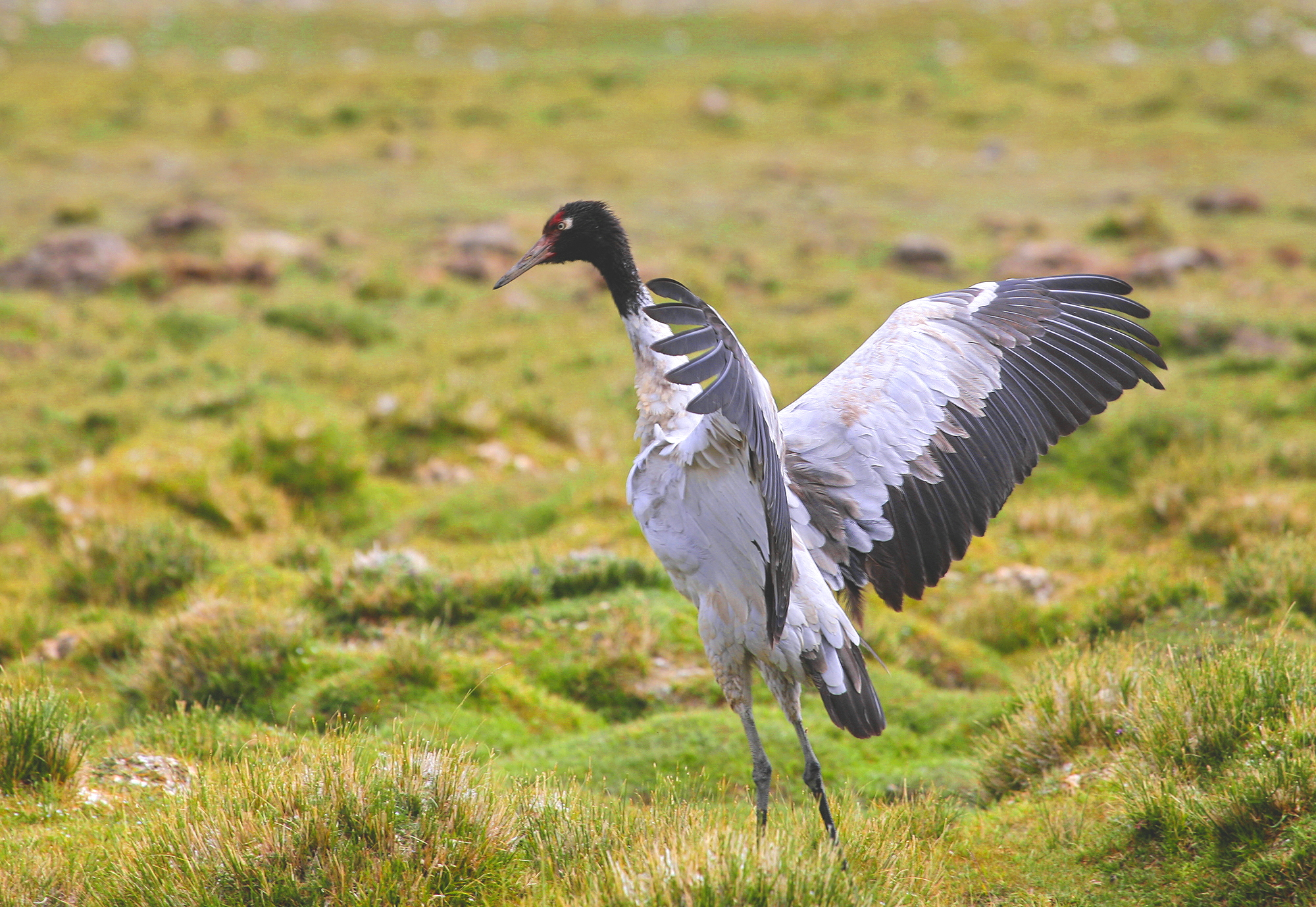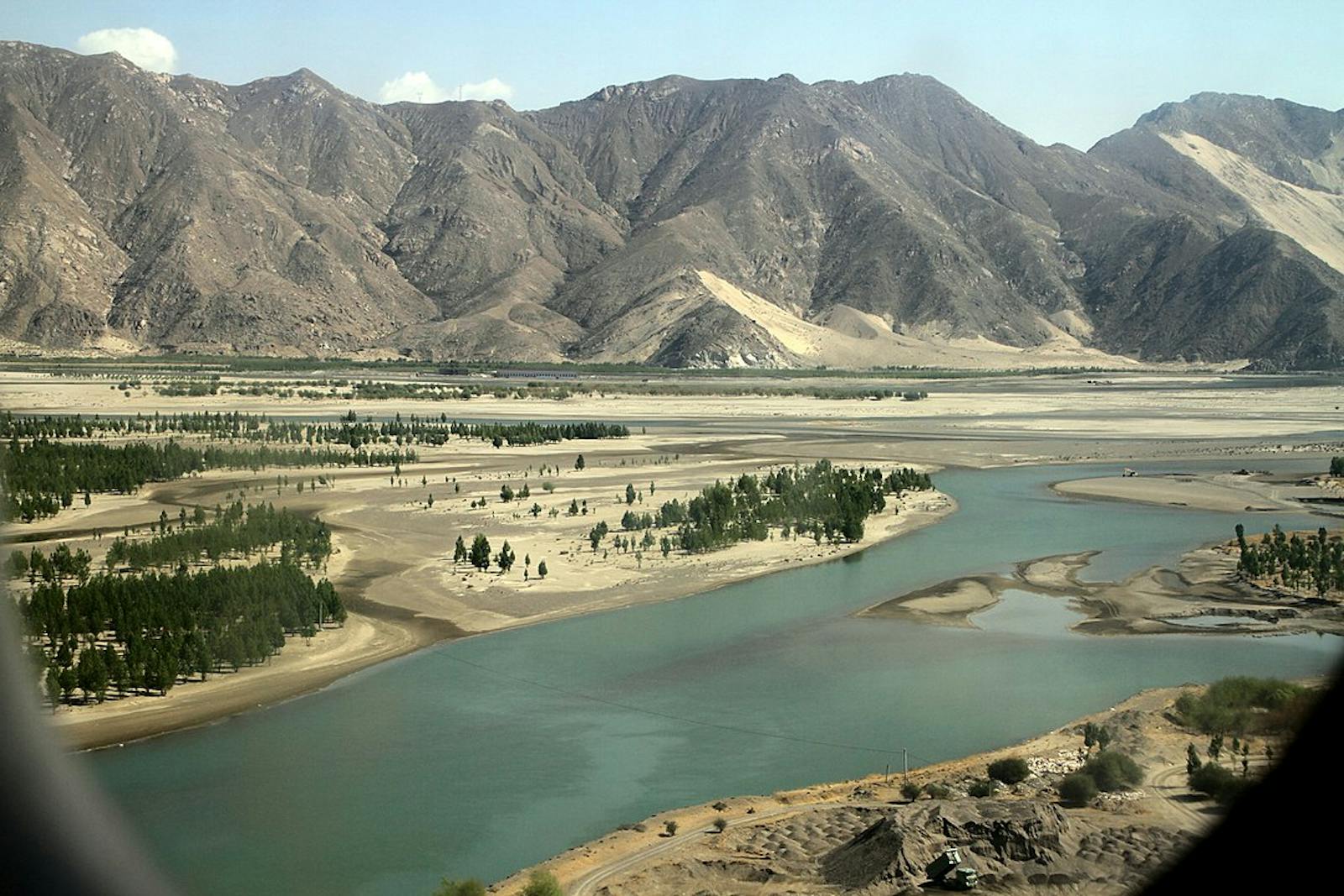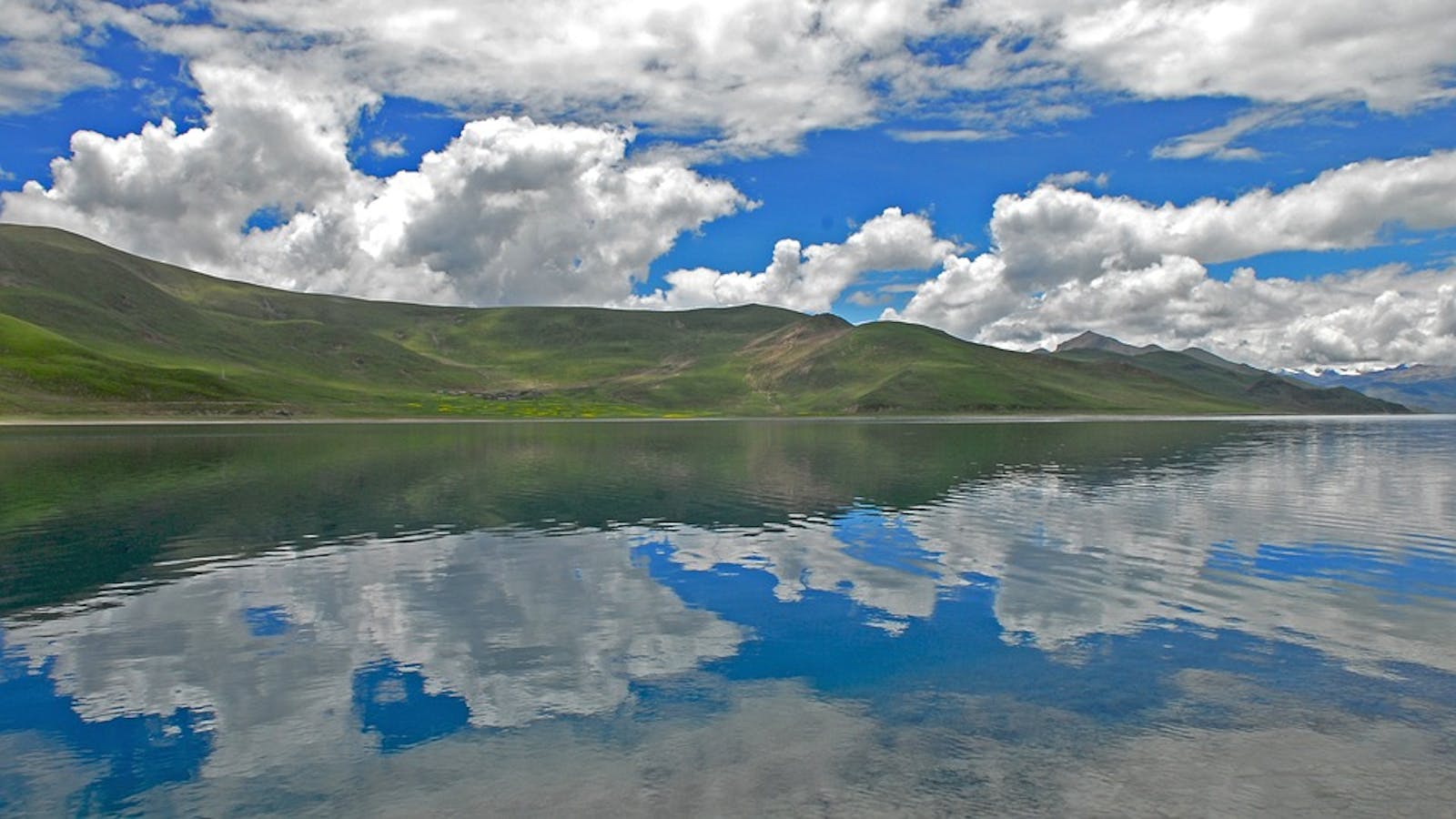Yarlung Zanbo Arid Steppe
The ecoregion’s land area is provided in units of 1,000 hectares. The conservation target is the Global Safety Net (GSN1) area for the given ecoregion. The protection level indicates the percentage of the GSN goal that is currently protected on a scale of 0-10. N/A means data is not available at this time.
Bioregion: Himalayan-Pamir Alpine Shrub & Meadows (PA41)
Realm: Eastern Eurasia
Ecoregion Size (1000 ha):
5,959
Ecoregion ID:
770
Conservation Target:
33%
Protection Level:
3
States: China, Bhutan
The Yarlung Zanbo River, aligned with the juncture of the Asian and Indian continental plates, flows eastward for more than 1,000 km, tracing a broad furrow parallel to the arc of the high Himalayan range. Headwaters, to the east of the holy Mt. Kailas, are dominated by cold desert steppe. Down valley, vegetation changes to deciduous scrub, and eventually to conifer-rhododendron forest at about 94°E. longitude.
The Yarlung Zanbo valley is situated at a lower elevation than other parts of the Tibetan Plateau and is further warmed during summer by föhn winds that descend the north slope of the Himalaya. These circumstances moderate the valley climate: mean annual temperatures are 4–8°C, and annual precipitation is 200–500 mm, concentrated in summer. Warm, sunny summer weather enables productive agriculture with irrigation. Consequently, the valley of the Yarlung Zanbo and its tributaries have supported permanent human habitation for more than 3,500 years.

The flagship species of the Yarlung Zanbo Arid Steppe ecoregion is the black-necked crane. Image credit: Creative Commons
Potential vegetation of the Yarlung Zanbo valley is steppe grassland with scattered shrubs and forbs. The most successful shrub taxa tend to branch profusely and bear small leaves. Genera include Sophora, Leptodermis, and Ceratostigma, each taxon adapted to a dry, sunny, and windy environment. Artemesia—an aromatic, wind-pollinated member of the daisy family—is one of the most abundant herbaceous plants. Shrubby riparian corridors in the valley bottom offer ephemeral habitat, as the riverbank shifts its position from year to year. Dunes form at the valley margin as daily winds carry sand from the riverbed during spring when the channel volume is low.
Slopes above 4,000 m elevation have cold steppe vegetation with lower species richness and a flora similar to the Tibetan Plateau. At these alpine elevations, Stipa feather grass provides groundcover amongst shrubs of honeysuckle and Potentilla fruticosa in the east and Caragana, a spiny legume, in the west.
Pollen residues and other signals from the soil indicate that much of the Yarlung Zanbo Arid Steppe supported mixed conifer forests until the landscape was changed by humans in the middle Holocene, 8,000-3,000 years ago. Consistent with the pollen record is a darkening of the soil and an increase in plant cover at about 4,100 m elevation, just as expected for an ecological transition from forest to alpine habitat–a sort of ghost treeline. This vegetation change from forest to steppe meadow is deemed to have been anthropogenic because the modern climate remains suitable for those forests that are no longer present.
The long history of human occupation means there are fewer large mammals here in the Yarlung Zanbo Valley, compared to other parts of Tibet. Argali occurred in historic times; Tibetan gazelle, white-lipped deer, and blue sheep are present in some areas.
The flagship species for this ecoregion, however, is the endangered black-necked crane. After breeding on the high plateau, about two-thirds of the species’ global population overwinters in the Yarlung Zanbo valley where the birds subsist on unharvested barley, tubers of wetland plants, and invertebrates like freshwater clams. Local people do not hunt the crane, but the birds are threatened by tree plantations, wetland habitat conversion to agriculture, and tourist infrastructure.
Priority conservation actions for the next decade are to: 1) work to maintain quality of wetland habitat for black-necked crane and other bird species; 2) monitor and safeguard remaining populations of wild ungulates, especially argali, Tibetan gazelle, and white-lipped deer; and 3) monitor and take steps to maintain good air quality in Lhasa Valley as this area undergoes urbanization.
Citations
Carpenter, C. 2000. Eastern Asia: Southern China. https://www.worldwildlife.org/ecoregions/pa1022. Accessed December 2018.
Miehe G., Miehe S., Kaiser K., Reudenbach C., Behrendes L., Duo L., Schlütz F. 2009. How old is pastoralism in Tibet? An ecological approach to the making of a Tibetan landscape. Palaeogeography, Palaeoclimatology, Palaeoecology 276 (1-4): 130-47.
Song, H., Zhang, Y., Gao, H., Guo, Y., Li, S. 2014. Plateau wetlands, an indispensible [sic] habitat for the black-necked crane (Grus nigricollis) - a review. Wetlands 34(4): 629-39.




